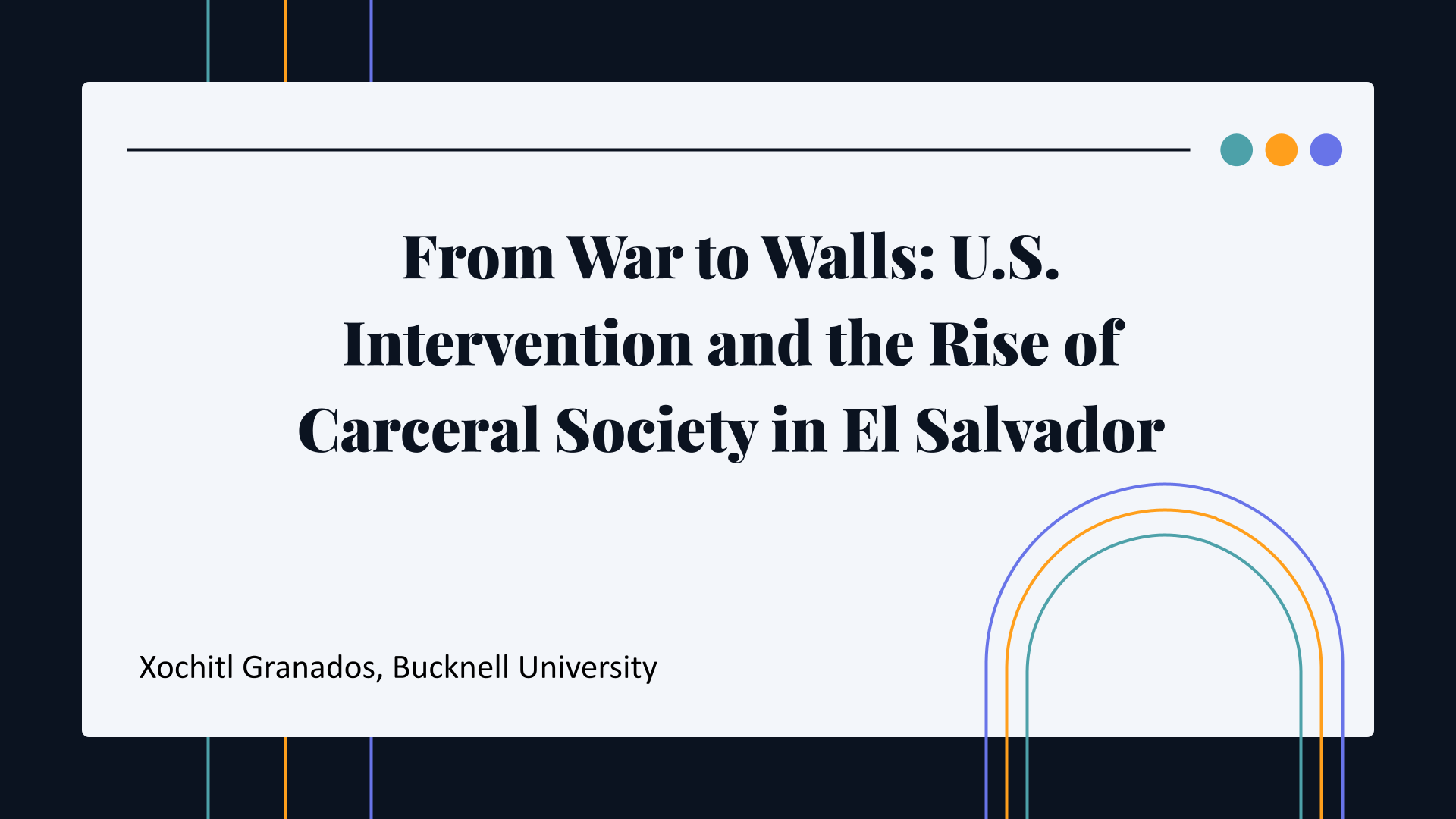
From War to Walls: U.S. Intervention and the Rise of Carceral Society in El Salvador
Author:
Xochitl Granados ’25Co-Authors:
Faculty Mentor(s):
D. Bret Leraul, Comparative & Digital HumanitiesFunding Source:
Bucknell Humanities CenterAbstract
In January 2023, El Salvador, the smallest country in Central America, opened Central America’s largest prison, the Centro de Confinamiento del Terrorismo (CECOT). The facility was primarily built to address the country’s escalating gang violence which had become one of the most significant security threats by the early 2000’s. The history of its development has its roots in the 1980’s when the United States played a significant role in the political and military landscape of El Salvador during the Salvadoran civil war. The involvement of the U.S. government, initially focused on counterinsurgency efforts and the suppression of left-wing movements in Latin America, helped stabilize the Salvadoran government and military during the war. However, it also fostered an environment of state violence and repression that prompted the rise of powerful gangs in the United States, as a result of increased immigration, which then spread to El Salvador through the mass deportation of undocumented immigrants in the 1990’s. Through the study of primary and secondary sources, including historical and legal documents from both the U.S. and Salvadoran government, I examine the historical and cultural significance of the foreign relations between the United States and El Salvador, in an attempt to provide an understanding about how U.S. intervention has shaped current security measures and the political landscape of the country, including the establishment of CECOT. CECOT has dramatically changed the country’s policing and carceral system, since its establishment, in an attempt to address the long-term consequences of American foreign influence.